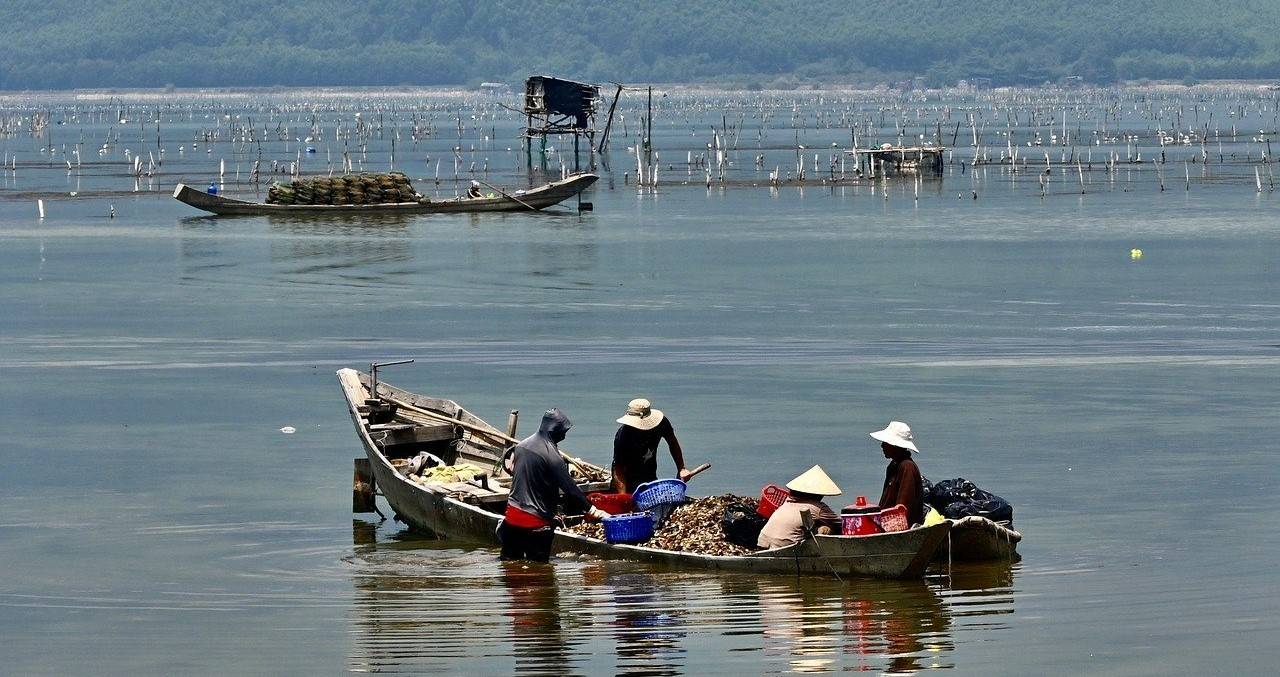Global Aquaculture Production Surpasses Capture Fisheries for First Time: FAO Report
Global fisheries and aquaculture production reached a record high in 2022, with aquaculture surpassing capture fisheries for the first time, according to the FAO's latest report.

A recent report from the Food and Agriculture Organization of the United Nations (FAO), released on June 7, 2024, reveals that global fisheries and aquaculture production has reached unprecedented levels. For the first time, the production of aquatic animals from aquaculture has surpassed that from capture fisheries. According to the 2024 edition of "The State of World Fisheries and Aquaculture" (SOFIA), global production in 2022 amounted to 223.2 million tonnes, a 4.4 percent increase from 2020. This total includes 185.4 million tonnes of aquatic animals and 37.8 million tonnes of algae.
Aquaculture production of aquatic animals hit 130.9 million tonnes in 2022, overtaking capture fisheries. Of this, 94.4 million tonnes were aquatic animals, making up 51 percent of the total aquatic animal production. This growth in aquaculture demonstrates its potential to meet the rising global demand for aquatic foods, emphasizing the need for sustainable practices and benefits to the regions and communities most in need.
Currently, aquaculture is dominated by a few countries. Ten countries, including China, Indonesia, India, and Vietnam, produce over 89.8 percent of global aquaculture output. However, many low-income countries in Africa and Asia are not fully utilizing their potential. Targeted policies, technology transfer, capacity building, and responsible investment are essential to enhance sustainable aquaculture in these regions.
The increase in aquatic food production highlights its potential in addressing food insecurity and malnutrition. Global consumption of aquatic animal foods reached 162.5 million tonnes in 2021, growing at nearly twice the rate of the global population since 1961. Per capita annual consumption rose from 9.1 kg in 1961 to 20.7 kg in 2022. Notably, 89 percent of total aquatic animal production was used for direct human consumption, underlining its importance in global food security. The remaining production was used for non-food purposes, such as fishmeal and fish oil.
To support further consumption from sustainable sources, it is vital to foster healthy diets and improve nutrition worldwide. Aquatic foods provide high-quality proteins and essential nutrients, contributing significantly to dietary needs globally. In 2021, aquatic foods accounted for at least 20 percent of the per capita protein supply from all animal sources for 3.2 billion people.
While global capture fisheries production has remained stable since the late 1980s, producing 92.3 million tonnes in 2022, there are concerns about the sustainability of marine stocks. The proportion of marine stocks fished within biologically sustainable levels decreased to 62.3 percent in 2021. Effective fisheries management is crucial to reversing this trend and ensuring the sustainability of fish stocks.
FAO's projections indicate a continued rise in both production and consumption of aquatic foods up to 2032. Aquatic animal production is expected to increase by 10 percent to 205 million tonnes, driven by both aquaculture expansion and recovery of capture fisheries. Apparent consumption is projected to rise by 12 percent, reaching an average of 21.3 kg per capita by 2032, driven by rising incomes, urbanization, and improvements in post-harvest practices and distribution. However, per capita consumption in Africa may decline due to population growth outpacing production increases, which is particularly concerning for sub-Saharan Africa.
The report also forecasts the implications of population dynamics on the supply of aquatic animal food up to 2050. To maintain the 2022 level of per capita consumption, the total supply would need to increase by 36 million tonnes, a 22 percent rise. This underscores the urgency of accelerating Blue Transformation priority actions to enhance the role of aquatic foods in combating hunger, malnutrition, and poverty.
In terms of employment, the fisheries and aquaculture sectors remain vital for livelihoods, employing an estimated 61.8 million people in 2022. Despite a slight decline from 2020, the sector's workforce remains significant. Women constitute 24 percent of the workforce, with a notable presence in the processing subsector. Addressing gender inequalities in wages and recognition of contributions is essential for advancing equity in the sector.
SOFIA 2024 provides a comprehensive analysis of global fisheries and aquaculture, emphasizing the progress in sustainable aquaculture expansion, effective fisheries management, and value chains prioritizing efficiency, safety, and equity. This edition highlights the need for ongoing efforts to ensure the sustainability and equitable distribution of benefits from the growing aquaculture sector.
Download Krishi Jagran Mobile App for more updates on the Latest Agriculture News, Agriculture Quiz, Crop Calendar, Jobs in Agriculture, and more.

